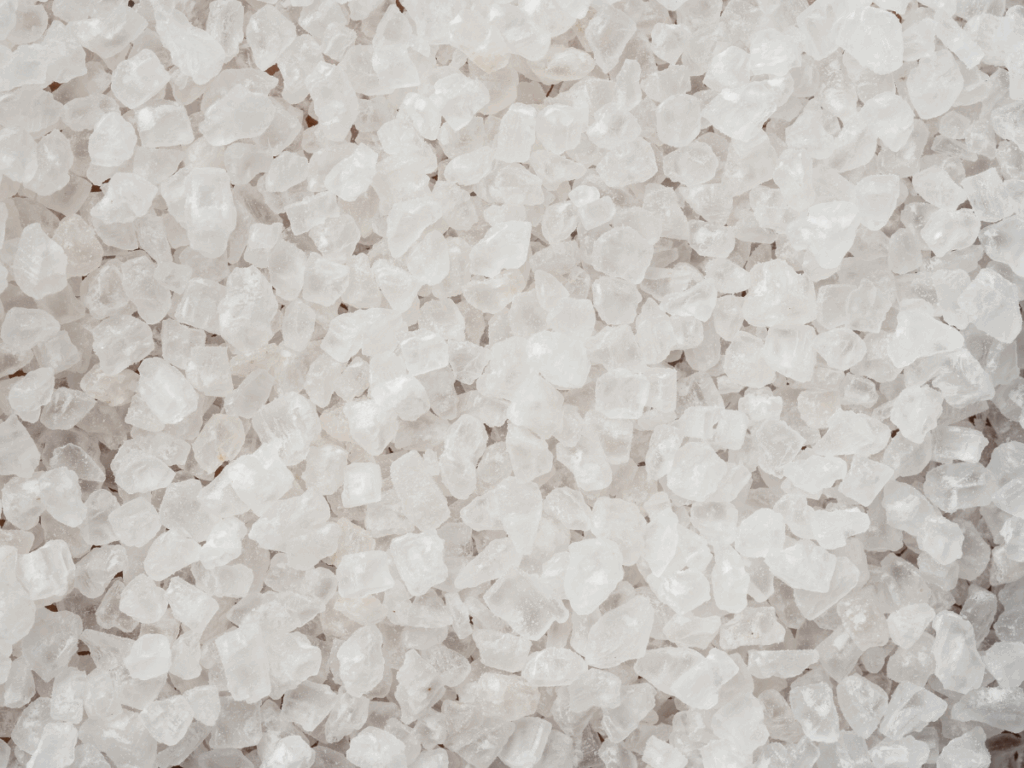
Restoring Health and Hope After Meth Addiction
Crystal meth addiction can unravel lives with alarming speed, shattering health, trust, and self-worth in its wake. What begins as a surge of energy or escape can quietly erode emotional stability and fracture relationships. At Legacy Healing Center, we approach each individual with clinical expertise and heartfelt understanding, offering not only comprehensive medical care but also a private, dignified space to begin again. Here, recovery is not just about breaking free; it’s about reclaiming wholeness and rediscovering a life rooted in clarity, purpose, and peace.
What Is Crystal Meth?
Crystal meth is a potent, illicit form of methamphetamine that typically appears as translucent or bluish-white shards, hence nicknames like “ice” or “glass.” It can be smoked, snorted, swallowed, or injected, and each route delivers an intense and rapid effect, increasing its risk for compulsive use.
While pharmaceutical methamphetamine (such as Desoxyn®) is rarely prescribed for ADHD or obesity, crystal meth is manufactured in clandestine labs using toxic household chemicals and unregulated processes. The result is a highly addictive stimulant that overwhelms the brain’s reward system, often leaving individuals trapped in a cycle of pursuit, crash, and craving. Its impact extends far beyond the neurological, undermining physical health, mental clarity, and emotional resilience with each use.
Recognizing Crystal Meth Use Disorder and Addiction
Spotting meth use early can save lives. Families and clinicians should watch for sudden, dramatic shifts in mood, behavior, and appearance:
- Behavioral & Emotional Signs – hyperactivity, compulsive repetition, paranoia, aggression, abandoning responsibilities, and secretive or deceptive behavior.
- Physical Signs – dilated pupils, rapid heart rate and breathing, severe weight loss, insomnia lasting days, skin sores from scratching, “meth mouth” (rapid tooth decay), and overheating or profuse sweating.
- Overdose Indicators – crushing chest pain, dangerously high body temperature (hyperthermia), seizures, or loss of consciousness require immediate medical attention.
Without intervention, these symptoms grow more severe, leading to organ damage, psychosis, and a markedly elevated risk of fatal overdose.
What Makes Crystal Meth Addictive?
Crystal meth’s grip is multidimensional, fueled by rapid changes in brain chemistry, intense psychological reinforcement, and social-environmental pressures.
Biological Factors
- Dopamine Flood: Smoking or injecting meth can raise dopamine levels 1,000 % above baseline, dwarfing natural rewards like food or exercise.
- Neuroadaptation: Repeated surges exhaust dopamine stores and damage receptors, leaving users unable to experience pleasure without the drug (“anhedonia”).
- Neurotoxicity: Prolonged use literally injures neurons, shrinking regions tied to memory and impulse control.
Psychological Factors
- Instant Gratification & Prolonged High: A single dose can produce euphoria for 8–12 hours, reinforcing repeated “binges.”
- Stress & Trauma: Users often self-medicate untreated anxiety, depression, or PTSD, which the initial rush temporarily masks.
- Cravings & Withdrawal: Post-use crashes trigger crushing fatigue, dysphoria, and cravings, driving a vicious cycle of compulsive drug-seeking.
How Does Crystal Meth Affect the Brain?
Crystal meth penetrates the blood–brain barrier quickly, unleashing dopamine, norepinephrine, and serotonin in quantities the brain was never meant to handle. Even limited exposure can trigger lasting changes in the circuitry governing motivation, judgment, and emotion.
Short- / Long-Term Effects on the Brain
| Short-Term Effects | Long-Term Effects |
|---|---|
| Intense euphoria, hyper-focus, talkativeness | Persistent cognitive deficits—memory, attention, and decision-making difficulties |
| Heightened libido, decreased appetite | Emotional dysregulation: irritability, anxiety, depression, psychosis |
| Wakefulness lasting 24–48 hours | Structural changes: shrinkage in the hippocampus and frontal cortex (Volkow et al., 2015) |
| Increased risk-taking & impulsivity | Increased incidence of Parkinsonian symptoms and movement disorders |
Importantly, partial brain recovery is possible after sustained abstinence, though some cognitive impairments may persist for months or years.
How Does Crystal Meth Affect the Body?
Beyond the brain, meth assaults virtually every system in the body, accelerating aging and compromising immunity.
Short- / Long-Term Effects on the Body
| Short-Term Effects | Long-Term Effects |
|---|---|
| Rapid heart rate & elevated blood pressure | Cardiomyopathy, arrhythmias, and heightened stroke risk |
| Hyperthermia & excessive sweating | Severe dental decay (“meth mouth”), malnutrition, skin infections |
| Suppressed appetite, sudden weight loss | Liver and kidney damage, pulmonary hypertension |
| Sleeplessness & muscle twitching | Weakened immune response, greater susceptibility to infectious diseases |
Overdose Risk
Because illicit meth varies in purity, a “usual” dose today can be lethal tomorrow. Overdose often presents with:
- Extreme hypertension or sudden cardiac arrest
- Hyperthermia exceeding 104 °F (40 °C)
- Seizures, stroke, or acute organ failure
Emergency treatment focuses on rapid cooling, cardiovascular support, and seizure control.
Crystal Meth Withdrawal and Treatment Programs
Detox is the critical first milestone in recovery. While meth withdrawal is rarely life-threatening, the psychological distress can be profound.
| Timeline | Common Symptoms |
|---|---|
| 0–48 hrs | Crash: exhaustion, hypersomnia, intense hunger, severe depression, cravings |
| Days 3–10 | Peak: anxiety, irritability, agitation, vivid nightmares, slowed thinking (“brain fog”) |
| Weeks 2–4 | Gradual improvement in mood and energy; cravings become episodic |
| 1 month + | Residual anhedonia, mood swings, “triggered” cravings in response to stress or cues |
Medical supervision eases discomfort and improves completion rates. A 2022 Journal of Addiction Medicine study found patients in supervised detox were significantly more likely to transition into long-term care (Ghosh et al.).
Treatment Programs for Crystal Meth Addiction
Effective addiction recovery typically involves a progression through multiple levels of care, each integrating medical support, behavioral therapy, and social connection to support lasting healing.
| Level of Care | Key Elements | Best For |
|---|---|---|
| Inpatient / Residential | 24/7 supervision, structured schedule, dual-diagnosis treatment | Severe addiction, co-occurring mental illness, unsafe home environment |
| Partial Hospitalization / Intensive Outpatient (IOP) | Intensive daytime therapy schedule with evening return home or sober living environment | Moderate to high stability & support |
| Outpatient Treatment | Weekly counseling, peer groups, medication management | Mild to moderate dependence, robust support network |
| Evidence-Based Therapies | Cognitive Behavioral Therapy (CBT); Matrix Model (16-week program blending CBT, relapse-prevention, family education, and drug testing); Contingency Management (incentives for abstinence) | All stages of recovery |
| Medication-Assisted Symptom Relief | Bupropion or mirtazapine for depressive symptoms; modafinil for fatigue; anti-psychotics if needed | Managing withdrawal & co-occurring disorders |
| Aftercare & Sober Living | Structured housing, vocational assistance, alumni groups, Crystal Meth Anonymous (CMA) | Relapse prevention & life-skills building |
Hope and Healing: A Roadmap to Long-Term Recovery
Long-term success hinges on sustained commitment and community support:
- Build a Support Network – Family, sober peers, mentors, and 12-step or secular recovery groups.
- Address Co-Occurring Disorders – Treat depression, anxiety, PTSD, or ADHD that might fuel relapse.
- Adopt Healthy Lifestyles – Regular exercise, balanced nutrition, adequate sleep, and mindfulness reduce stress and restore brain chemistry.
- Plan for High-Risk Situations – Identify triggers, rehearse coping strategies, and keep emergency contacts handy.
- Celebrate Milestones – Reward yourself for progress; positive reinforcement strengthens resolve.
A Future Beyond Addiction Is Possible
No matter how long you’ve struggled or how far things may seem from where you want to be, healing is within reach. At Legacy Healing Center, we walk beside you with clinical expertise, compassion, and the belief that every person is capable of transformation. If you or someone you love is ready to take that first step toward lasting recovery from crystal meth addiction, we invite you to reach out. Your future deserves this moment.
Call us today for a confidential consultation and begin your journey toward clarity, connection, and wholeness.


 Written By:
Written By: Edited By:
Edited By: Clinically Reviewed By:
Clinically Reviewed By: 




 Verify Insurance
Verify Insurance